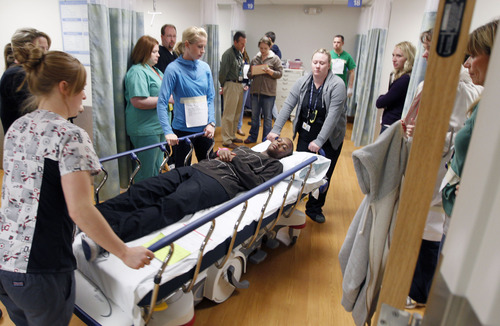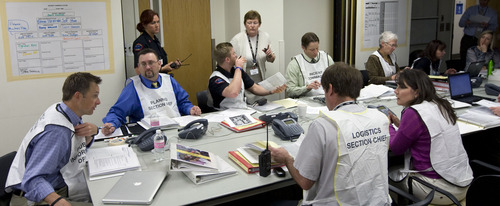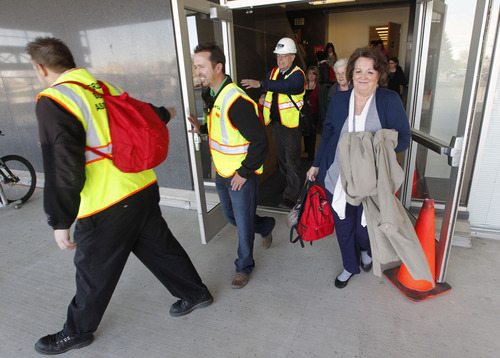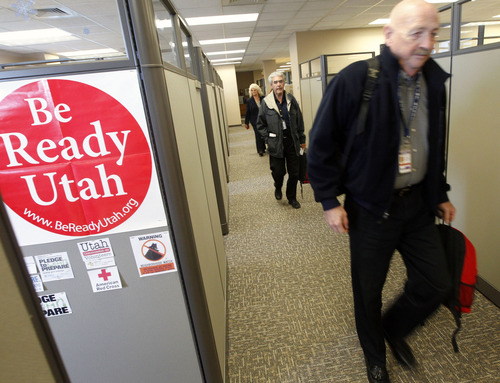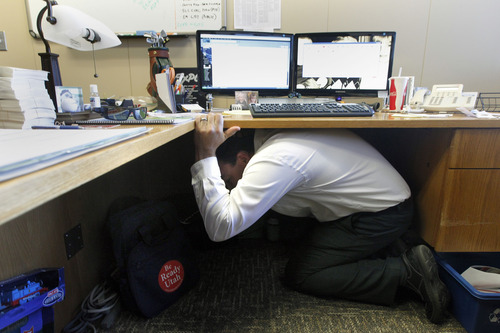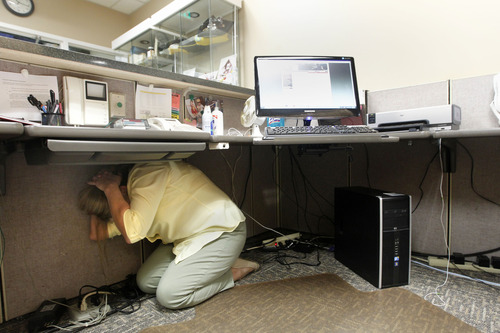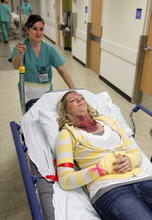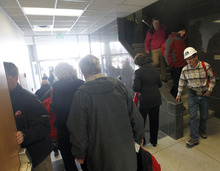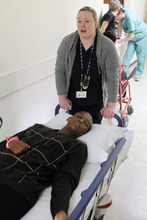This is an archived article that was published on sltrib.com in 2013, and information in the article may be outdated. It is provided only for personal research purposes and may not be reprinted.
If any office in Utah should be ready for an earthquake, it's the state's Division of Emergency Management.
The alarm inside the division's office went off as planned at 10:15 a.m. Wednesday, cutting short friendly conversations around the building as workers ducked under their desks and waited for the imagined quake to end.
The Utah Division of Emergency Management says that nearly 830,000 Utahns were planning to participate in the drill through a variety of emergency scenarios and activities designed to increase earthquake awareness and preparedness.
In 2012, Utah had the largest per capita participation ShakeOut in the world, with 33 percent of the state's population, or 945,000 Utahns, involved in the mock quake.
Last year's participants included private citizens, schools, hospitals, grocery stores, the American Red Cross and the Utah National Guard — all monitored by the Emergency Operations Center in the basement of the state Capitol. The EOC will conduct its own emergency drill on Thursday.
While Utah may not seem like a hotbed of earthquake activity, there are about 800 tiny quakes per year along the Wasatch Front, and a large, catastrophic quake happens about every 350 to 400 years in Utah, according to Department of Public Safety spokesman Joe Dougherty.
In the year since Utah's first ShakeOut, the division has learned a lot, according to Dougherty. The division's emergency communication system has been beefed up in the last year, he said. Now the division's public information staff will be better equipped to disseminate information using more reliable land line phones and laptops that they didn't have last year.
Dougherty said that last year's drill also caused a lot of individual families to reassess their own emergency planning, including outdated emergency kits.
"People found that the clothes they packed for their toddler no longer fit their 17-year-old," Dougherty said.
But while a few tweaks in the state's preparedness can be necessary, it's also important for a lot of things to stay the same, said Be Ready Utah manager Ryan Longman. The goal is for people to get used to the recommended safety procedures for an earthquake: drop, cover and hold.
"We want people to be as comfortable with it as 'stop, drop and roll,'" Longman said, referring to the instructions on what to do if your clothing catches fire.
The safest response in an earthquake is to get low to the ground, get underneath something sturdy and hold on until the shaking is over, Longman said. Even if you can't get under a table or a desk, you should still get on the ground and cover yourself with your hands, which Longman said is still safer than trying to run during a quake.
Although the annual Great Utah ShakeOut started last year from the division's office, the employees working there along with hundreds of others on the Utah State Capitol's campus ducked under their desks and evacuated en masse Thursday morning, along with many other offices, families and government agencies statewide.
At the capitol, about 1,000 employees sauntered out, with red backpacks draped over their shoulders. Each state employee has had their 72-hour kits ready to go for the past few years, said Judy Ainsworth, who works as an office technician at the Division of Emergency Services. Ainsworth was one of many on the Capitol's west lawn laughing and joking with her coworkers as they waited for the drill to wind down. She said she enjoys being part of the ShakeOut, but she also took it seriously. She made sure to get under her desk and grab on, just like she would in a real situation.
"You kind of get into the spirit of it," she said.
Twitter: @kimballbennion —
How it shook out
The Great Utah ShakeOut — a statewide earthquake drill — started Wednesday at 10:15 a.m.
And while the earth remained quiet, the simulation sounded real enough at many venues, where rumbling, banging and crashing sounds were played over intercom systems.
If a magnitude 7.0 earthquake were to occur, state officials have projected death toll for the Wasatch Front at 2,500 people, with 2,000 suffering life-threatening injuries.


